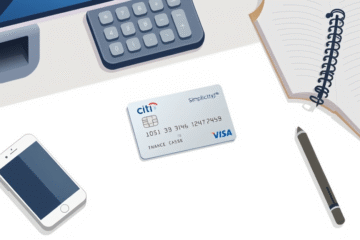Customizable Credit Card Limits for Your Profile
Credit Flexibility is becoming increasingly important in today’s financial landscape, where individuals seek more control over their spending habits.
Start mastering your credit card today!
Get your student credit card in minutes!
This article will explore the concept of credit cards that offer adjustable and customizable limits, highlighting how these features can enhance personal financial management.
With the ability to tailor spending limits to fit unique financial profiles, users can enjoy increased purchasing power and flexibility in their finances.
We will delve into the benefits of having no preset spending limits and how tailored credit limits can help align credit availability with actual spending requirements.
Adapting Credit Availability to Individual Profiles
Modern credit cards are redefining how spending power aligns with an individual’s financial profile.
These cards utilize flexible limits that adapt to a variety of user-specific metrics, such as income, credit history, and overall payment behavior.
By evaluating these personal factors, credit card issuers tailor their offerings dynamically, ensuring that credit accessibility remains proportional to the borrower’s actual financial circumstances.
This method grants cardholders the confidence to access credit responsibly, reinforcing their capacity to manage finances without undue constraints.
Employing customizable credit limits provides another layer of financial agility.
This feature allows users to adjust their spending boundaries as their needs and financial situations evolve.
For instance, during periods of increased purchasing needs or unexpected expenses, cardholders can request adjustments that reflect their current creditworthiness.
Relevant information for applicants includes the ability to tailor cards for comprehensive control over spending.
Credit card companies like American Express and City National Bank provide options to set spending limits, allowing individuals to practice personalized financial management.
This ensures cardholders maintain financial health and simultaneously maximize purchasing power.
Methodologies Behind Limit Allocation
Understanding the methodologies behind limit allocation is crucial for comprehending how lenders determine adaptable spending limits.
Lenders rely on a combination of quantitative data, such as credit scores and income levels, alongside qualitative data, like individual spending habits and financial goals, to assess a person’s creditworthiness.
Ensuring transparency and accuracy in this process helps clients feel more confident in their credit options while fostering a responsible borrowing environment.
Creditworthiness Evaluation
Lenders evaluate creditworthiness assessment by leveraging credit bureau data and declared income to determine an individual’s reliability for setting initial credit card limits.
This process involves a thorough analysis of credit reports, which detail payment history, credit utilization, and previous defaults.
Known for its importance, a credit score serves as a critical component in this evaluation, offering insights into financial behavior.
Moreover, income verification confirms your declared earnings, ensuring consistency and truthfulness in the applicant’s profile.
According to NerdWallet on Credit Card Limits, the assessment also includes existing liabilities, balancing income against recurring debts, to fine-tune credit limits based on actual financial standing.
These components form a comprehensive picture, ensuring informed credit limit decisions.
Behavioral Spending Analysis
Credit card issuers leverage continuous monitoring of spending patterns for effective risk evaluation.
By analyzing real-time purchase data, issuers can swiftly identify shifts in consumer behavior, which alert them to potential risks or opportunities for enhancing credit offerings.
For instance, an uptick in purchases beyond usual patterns might prompt a temporary credit limit adjustment.
Conversely, if an individual consistently maintains consistent repayment habits, issuers may determine they are eligible for a credit line increase.
As described in Dock’s Smart Limit Innovation, such dynamic credit management strategies facilitate tailored responses, ensuring customers’ credit lines align with their evolving financial behaviors and maintaining financial stability across transactions.
Practical Advantages and User Control
Adaptive credit card limits empower consumers by offering them greater control over their finances.
With the ability to customize spending limits, users can align their credit availability with their personal budget and changing needs.
This flexibility not only enhances financial management but also encourages growth and responsible spending.
Key Consumer Benefits
Credit cards with adjustable limits offer improved financial control, allowing users to align their spending capacity with their current financial situations.
These cards provide a tailored approach, matching limits based on creditworthiness and personal needs.
This feature significantly reduces the risk of overextending, as users have the flexibility to adjust their limits and avoid unnecessary debt.
Additionally, the ability to manage spending effectively can lead to an increased purchasing power, especially when limits grow with the user’s profile.
Moreover, the adaptations in spending limits cater to evolving financial goals, as seen in several providers like Ramp’s No Limit Credit Cards.
Some key benefits of this system include:
- Increased budgeting precision
- Enhanced control over spending habits
- Limits that adapt to financial growth
By offering these advantages, adjustable limit cards provide a robust tool for effective financial management.
Requesting Limit Adjustments
The limit adjustment process for credit cards can be navigated seamlessly through online platforms, mobile apps, or even over the phone.
Start by ensuring your income details are up-to-date as most credit issuers consider this crucial information when evaluating your request.
By logging into your account via the issuer’s website, often a “request credit limit increase” option is available.
Alternatively, use your credit card’s mobile app to follow intuitive prompts designed to handle adjustments efficiently.
A simpler approach involves directly calling the customer service number on your card to speak with a representative, allowing you to explain any financial changes or positive payment history.
Maintaining a low credit utilization rate and being consistent with payments enhances your chances of approval, offering a smoother transition in your credit management journey.
Responsible Use and Potential Drawbacks
Responsible use of credit cards with flexible and customizable limits can offer significant advantages, but it also introduces certain risks that require careful management.
One of the primary hazards of flexible credit limits is the heightened risk of overspending.
With increased purchasing power at one’s fingertips, there is often a temptation to indulge beyond one’s financial means, which can result in credit damage, higher interest costs, and financial stress.
Furthermore, maintaining a high utilization ratio is particularly detrimental.
This ratio, which indicates the amount of credit being used relative to your total credit limit, plays a critical role in determining credit scores.
A high utilization ratio can lower your credit scores, complicating future credit access and potentially increasing borrowing costs.
To mitigate these risks, consistently monitoring your credit card statements and setting up personal alerts can act as effective preventive measures.
By regularly reviewing financial activities, users can keep spending in check, ensure timely payments, and optimize credit utilization.
For more insights into utilizing credit responsibly, consider checking resources like Experian’s Guide to Credit Limit Management.
Ultimately, responsible use of customizable credit limits can promote better financial health and stability.
In summary, credit cards with flexible and customizable limits offer significant advantages for managing personal finances.
By providing users with the tools to adjust their credit availability, these cards empower individuals to meet their varied financial needs effectively.



0 Comments